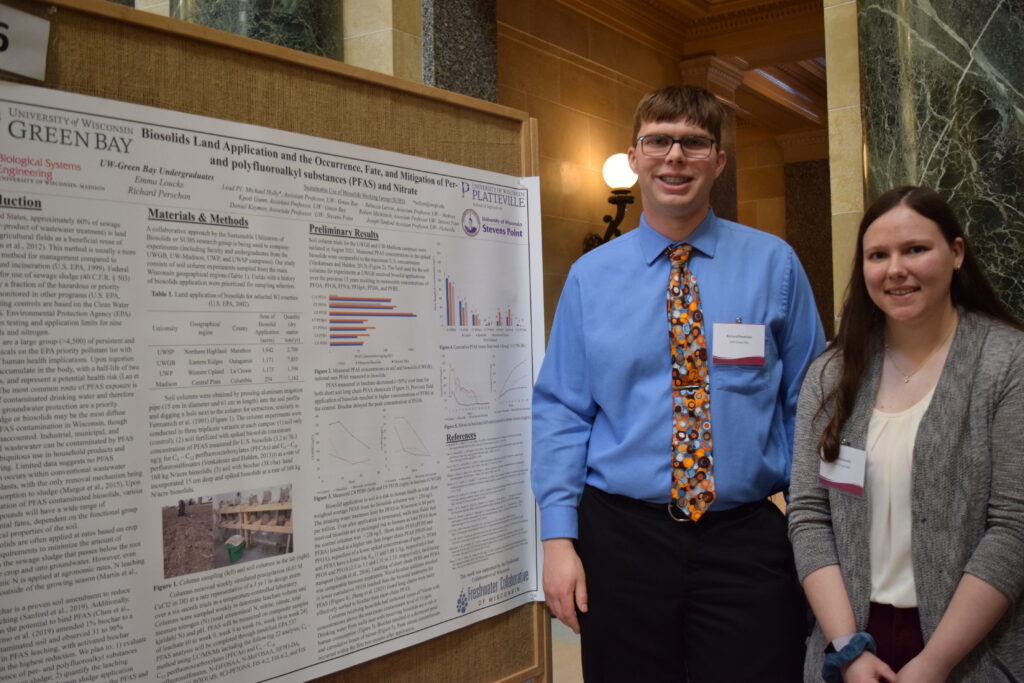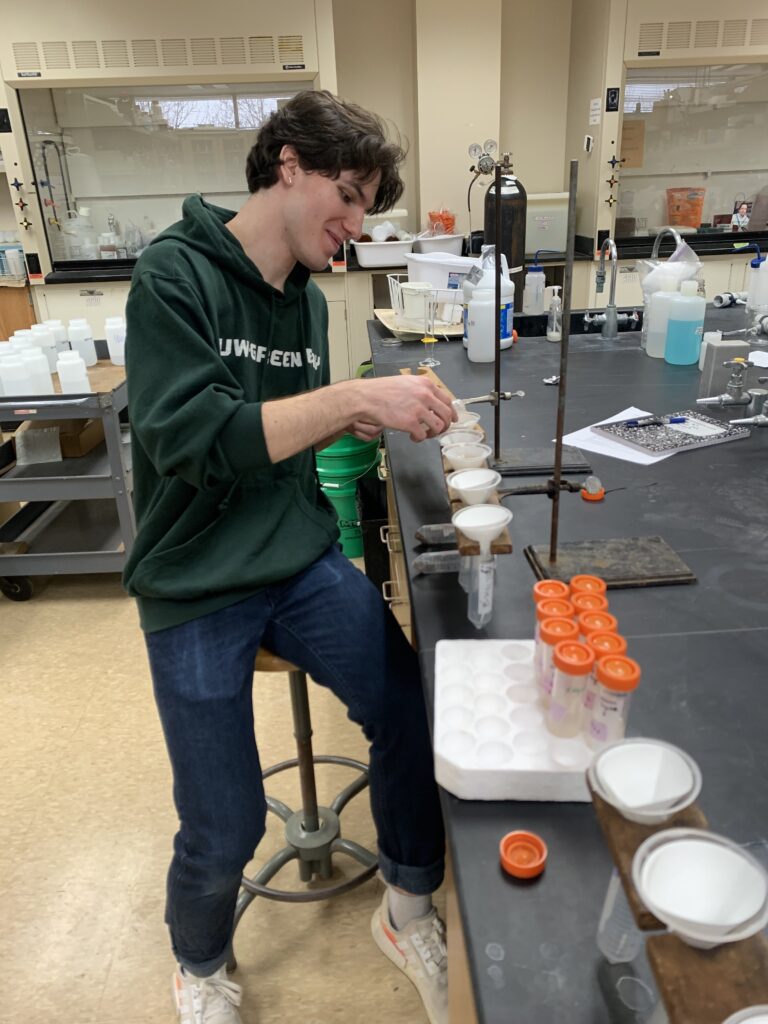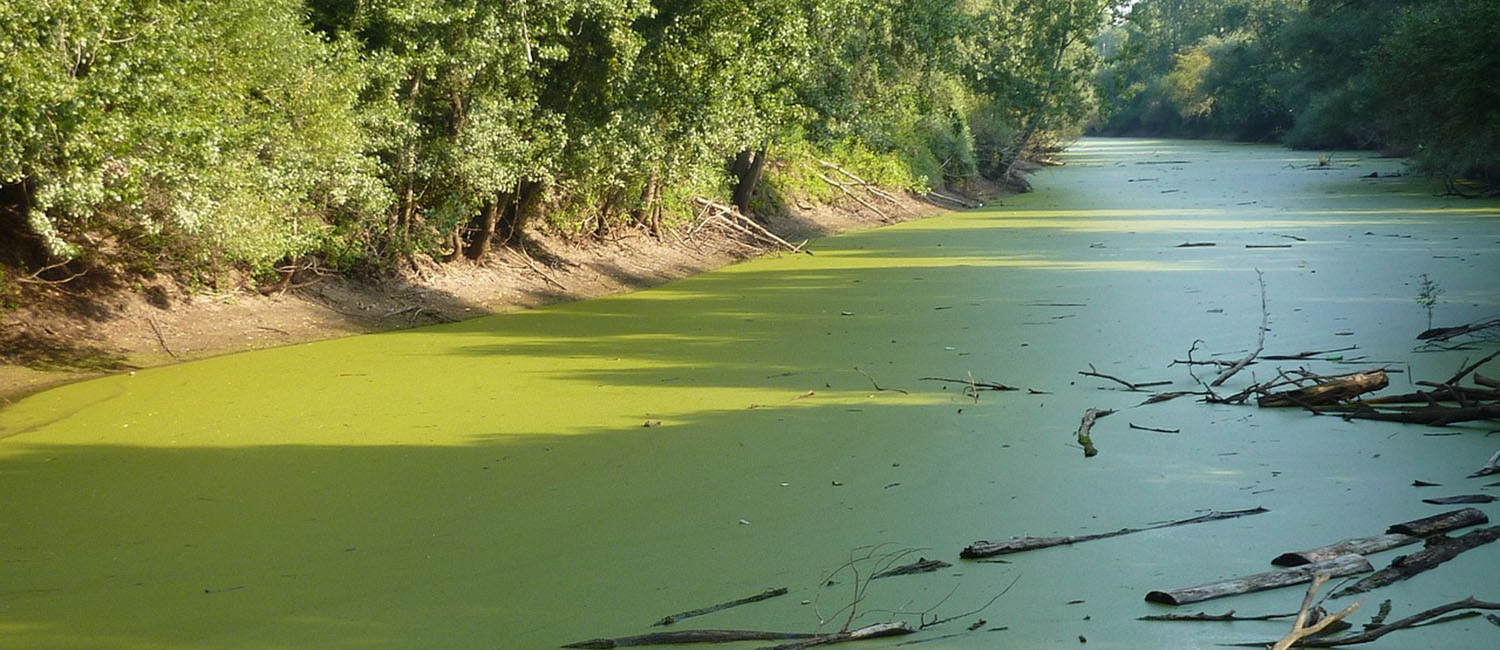By Heidi Jeter, Freshwater Collaborative
When Michael Holly, an assistant professor at UW-Green Bay, began evaluating the use of natural and industrial by-products for their phosphorus sorption potential, he had no idea where the project would lead.
A $10,000 grant from the Freshwater Collaborative in 2020 to hire an undergraduate researcher for his lab helped kick things off. Since receiving the initial funding, Holly has hired multiple students, and he’s incorporated the research into UW-Green Bay’s environmental science capstone courses to provide students with research experience and practice analyzing data.
The payoff goes beyond student training. Testing filter media for Calumet, Outagamie and Brown Counties has become a core function of Holly’s lab — and preliminary data from the Freshwater Collaborative grant played a key role in securing more funding.

“The whole process really started when I got funds for a student to try things,” Holly says. “The funding helped me develop and home in on my methods and the materials I was using so I could be more competitive in applying for larger funding sources.”
In 2023, Holly and his colleagues Karen Stahlheber, Mandeep Bakshi, and Jessica Warwick received a $750,000 Capacity Building Grant from the U.S. Department of Agriculture, National Institute of Food and Agriculture (USDA). The research includes collaborators from Outagamie County, USGS, and UW-Platteville.
Their goal is to develop cost-effective solutions for removing phosphorus from agricultural runoff and reducing harmful algal blooms in the Great Lakes. The USDA grant will provide support for three graduate research assistantships, multiple undergraduate research assistants, and remote water quality monitoring equipment.

The investment will improve the agricultural runoff treatment system researchers use for testing filters, which is located on property owned by Heart of the Valley Metropolitan Sewerage District. Eventually they hope to work with farmers to deploy efficient and economical systems that will reduce agricultural nutrients running into water sources.
Just as exciting is that the researchers are converting various waste products into filter media to help create a circular economy. For example, they are testing steel waste from Charter Steel.
“We hope we can help local industries be more sustainable,” Holly says.

